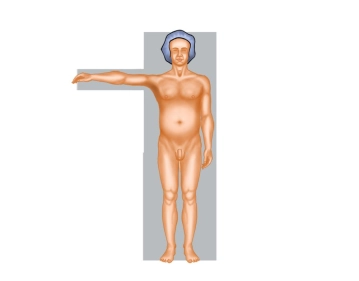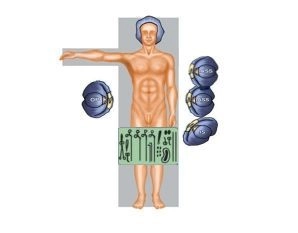- Tumors of the pancreatic head (carcinomas, adenomas, cystic tumors etc.)
- Chronic pancreatitis with complications (e.g., CHD stenosis, pancreatolithiasis, pancreatic duct dilation)
- Unidentified mass in the pancreatic head
- Distal bile duct carcinoma
- Papillary carcinoma, large adenomas of the papilla or in the duodenum near the papilla
- Metastases in the pancreatic head
-
Indications
-
Contraindications
Preoperative
- Confirmed invasion of the vessels (superior mesenteric vein, portal vein, superior mesenteric artery, celiac trunk)
- Known metastatic tumor
- Portal vein thrombosis and other diseases with marked venous collateral circulation (liver cirrhosis)
Intraoperative
- Vascular invasion, then possibly only enteric bypass surgery
- Tumor invasion to the pancreatic tail, then pancreatectomy
- Marked local inflammation
- Very soft pancreas, then total pancreatectomy
-
Preoperative diagnostic work-up
Diagnostic imaging diagnostics mandatory
- Ultrasonography Pancreatic mass, ductal dilation, cysts, cholestasis, cholecystolithiasis
- Abdominal CT scan Pancreatic mass, lymph node enlargement, unhindered perfusion of superior mesenteric vein, portal vein, superior mesenteric artery and celiac trunk, distant metastases, pancreatic calcifications, pancreatolithiasis
- MRCP = magnetic resonance cholangiopancreatography: Cysts; irregularities, stenoses, dilation of the pancreatic duct, double duct sign = concurrent stenosis of the pancreatic duct and CHD, stenosis or dilation of CHD, pancreatolithiasis
Diagnostic imaging – optional
- Endosonography: Pancreatic mass, possibly needle biopsy; cysts
- ERCP: see MRCP, possibly with papillotomy and stenting of the CHD
Functional diagnostic work-up of the pancreas
- Oral glucose tolerance test in undiagnosed diabetes mellitus for assessment of endocrine pancreatic function
- HbA1c to assess endocrine pancreatic function
- Fecal elastase for diagnostic work-up of exocrine pancreatic function
Diagnostic lab studies
- Tumor marker CA 19-9
- Tumor marker CEA (particularly in EUS guided needle biopsy of cysts)
- Possibly genetics: PRSS1, SPINK1, PSTI, CFTR (in young patients to rule out hereditary origin - strict indication because of the high expense!)
-
Special preparation
- Blood typing
- Allocation of 4 packed RBCs
- Possibly stabilizing the coagulation (e.g. Konakion® (vitamin K1))
- Possibly improving the liver function (e.g. CHD stenting in icterus)
-
Informed consent
General
- Secondary healing
- Thromboembolism
- Lymph fistula
- Injury of internal organs (bowel, liver, stomach, spleen)
- Redo procedures
Specific:
- Bleeding/secondary bleeding: PPH = postpancreatectomy hemorrhage
- Pancreatic fistula: POPF = postoperative pancreatic fistula
- Gastric emptying disorder: DGE = delayed gastric emptying
- Bile leakage/bilioma
- Suture line failure/stenosis: Pancreatojejunostomy/-gastrostomy, hepaticojejunostomy, gastro-/duodenojejunostomy
- Residual pancreatitis
- Necrosis of the pancreatic remnant
- Endocrine and exocrine pancreatic insufficiency
- Insulin-dependent diabetes mellitus (lifelong)
Definition and classification of PPH, POPF and DGE by the International Study Group of Pancreatic Surgery (ISGPS), see literature references
-
Anesthesia
- General anesthesia
- Central venous catheter
- Arterial pressure measurement
- Gastric tube
- Foley/suprapubic catheter
- Perioperative prophylactic antibiotics
- Octreotide administration, e.g. Sandostatin®
- Intraoperative and postoperative analgesia with Spinal anesthesia
Follow these links to PROSPECT (Procedures Specific Postoperative Pain Management) and to the International Guideline Library.
-
Positioning
![Positioning]()
Supine position with
- right arm abducted
- left arm adducted
-
Operating room setup
![Operating room setup]()
- Surgeon on right side of patient
- First assistant: On the patient's left, facing the surgeon
- Second assistant: On the patient's left, craniad of first assistant
- Scrub nurse on left side of patient, caudad of first assistant
-
Special instruments and fixation systems
Apart from the basic abdominal surgical instruments, the following additional equipment is needed:
- Abdominal retractor system with 4 blades (frame size depending on the patient's size)
- Ulrich cable winch retractor system or similar
- Multicolored silicone vessel loops for looping important anatomical structures
- Bipolar electrosurgery system, e.g. LigaSure® dissection forceps
- Optional: T-drain 2.5mm - 3.5mm
-
Postoperative management
Postoperative care:
- At least 1 night on ICU for monitoring
- Usually no postoperative ventilation
- Perioperative antibiotics for 48 to 72 hours postoperatively
Perioperative antibiotics started with induction of anesthesia, e.g., an i.v. combination of cefotaxime 3x2 g and metronidazole 3 x 0.5 g; in case of penicillin allergy substitute ciprofloxazin 200 mg 1-0-1 for cefotaxime - Frequent lab studies
- Measuring amylase. Lipase and bilirubin in drain secretions
- Drains removed on postoperative day 6-9 depending on secretion volume and level of above-mentioned parameters
- Gastric tube usually removed on postoperative day 1
- Epidural catheter removed by anesthesiologist on postoperative day 3-6
- Blood glucose profiles during inpatient stay; diabetes counseling in the case of abnormal values
- Pancreas enzyme substitution and nutritional counseling
- PPI prophylaxis: Initially i.v., then p.o. beyond discharge
- Octreotide s.c. for 7 days postoperatively, e.g. Sandostatin®
The dosage depends on the potential fistula risk: 3 x 100 micrograms for pancreatic tissue harder on palpation and 3 x 200 micrograms for softer pancreatic tissue.
- Terminate postoperative infusion protocol and parenteral nutrition starting postoperative day 6 the latest and remove CVC
- Length of stay on the regular ward 10 - 14 days (very much dependent on patient)
T-drain
In small CHDs and/or difficult anastomoses insertion of a T-tube (caliber 2.5-3.5 mm) is recommended. For 7 days following surgery the drain is left open; then contrast-enhanced fluoroscopy is performed. After ruling out anastomotic failure the tube is clamped and then the EasyFlow drain at the anastomosis removed. The T-tube is left in place for 6-8 weeks (with the patient discharged in the meantime) and then undergoes another contrast-enhanced imaging study. If the anastomosis is unremarkable the drain is removed under antibiotics (either according to the sensitivity test of the intraoperative culture swab of the bile duct or levofloxacin 500 mg 1-0-1 p.o.). Lab studies and ultrasound follow-up on next day are recommended; when infection is suspected, e.g., lab study, fever, etc., some cases may require inpatient management for a few days.
Deep venous thrombosis prophylaxis:
- No medication for thrombosis prophylaxis on the day of surgery
- Starting postoperative day 1 administer prophylaxis with low molecular weight heparin once a day s.c.
- Variation possible in patients with required anticoagulation due to pre-existing conditions
This link will take you to the International Guideline Library.
Ambulation
- First day post-surgery to edge of bed
- Then proceeding rapidly depending on the age and overall condition of the patient.
Physical therapy
- Breathing exercises and individual physiotherapy preferably starting postoperative day 2
Diet
- Starting on postoperative days 1 and 2 with tea and water
- Starting on postoperative day 3 initiate pancreatic diet, followed by gradual return to unrestricted diet by day 6-9 with administration of pancreatic enzymes
Bowel movement:
- Enema by postoperative day 3, if needed
- Possibly lactulose syrup (e.g. Bifiteral) or oral polyethylene glycol (e.g. Movicol®)
Work disability
- Highly individual
- Depending on patient recovery and any other treatment measures , e.g., chemotherapy.
- In general, the patient should recuperate for 2 to 3 months


